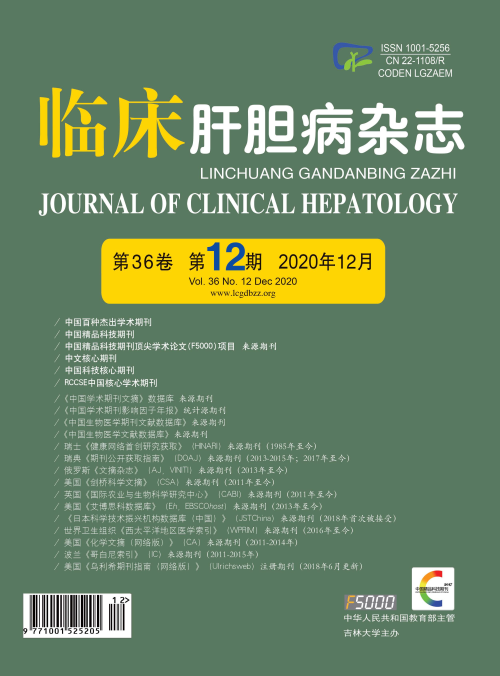Objective To investigate the effect of kaempferol on the proliferation,migration,invasion,and apoptosis of human hepatoma Bel-7402 cells and related molecular mechanism. Methods Hepatoma Bel-7402 cells cultured in vitro were randomly divided into control group and low-,middle-,and high-concentration experimental groups. The experimental groups were treated with low-,middle-,and high-concentration kaempferol( 25,50,and 100 μmol/L),and the control group was treated with an equal volume of dimethyl sulfoxide. CCK-8 assay was used to observe the effect of kaempferol on the viability of Bel-7402 cells; plate colony formation assay was used to evaluate the effect of kaempferol on cell colony formation ability; wound healing assay and Transwell chamber were used to observe the effect of kaempferol on cell migration and invasion; Western blot was used to measure the expression of apoptosis-and cycle-related proteins. A one-way analysis of variance was used for comparison between multiple groups,and the least significant difference t-test was used for further comparison between two groups. Results After 24 hours of treatment,the cell viability was 100. 00% ± 2. 72% in the control group and 75. 70% ± 2. 42%,62. 79% ± 2. 45%,and 43. 41% ± 2. 11%,respectively,in the low-,middle-,and high-concentration experimental groups,and compared with the control group,the experimental groups had a significant reduction in cell viability( all P < 0. 05).The number of cell colonies was 923. 3 ± 35. 2 in the control group and 682. 7 ± 24. 4,464. 0 ± 22. 0,and 327. 3 ± 14. 0,respectively,in the low-,middle-,and high-concentration experimental groups,and compared with the control group,the experimental groups had a significant reduction in cell colony formation ability( all P < 0. 05). After 24 hours of treatment,the relative migration rate was 100. 00% ± 1. 11% in the control group and 63. 33% ± 1. 16%,51. 72% ± 3. 23%,and 37. 18% ± 2. 71%,respectively,in the low-,middle-,and high-concentration experimental groups,and the number of transmembrane cells was 212. 0 ± 3. 0 in the control group and 134. 0 ± 2. 0,71. 0 ±2. 0,and 34. 0 ± 1. 0,respectively,in the low-,middle-,and high-concentration experimental groups; compared with the control group,the experimental groups had significant reductions in relative migration rate and number of transmembrane cells( all P < 0. 05). After48 hours of treatment,compared with the control group,the low-,middle-,and high-concentration experimental groups had a significant reduction in the expression of the anti-apoptotic protein Bcl-2( all P < 0. 05),a significant increase in the expression of the pro-apoptotic protein Bax( all P < 0. 05),and a significant reduction in the expression of C < italic/> yclinD1( all P < 0. 05). Conclusion Kaempferol can inhibit the proliferation,migration,and invasion of human hepatoma Bel-7402 cells and promote the apoptosis of such cells,possibly by regulating the apoptosis proteins Bax and Bcl-2 and downregulating the expression of CyclinD1.









 本站查看
本站查看




 DownLoad:
DownLoad: